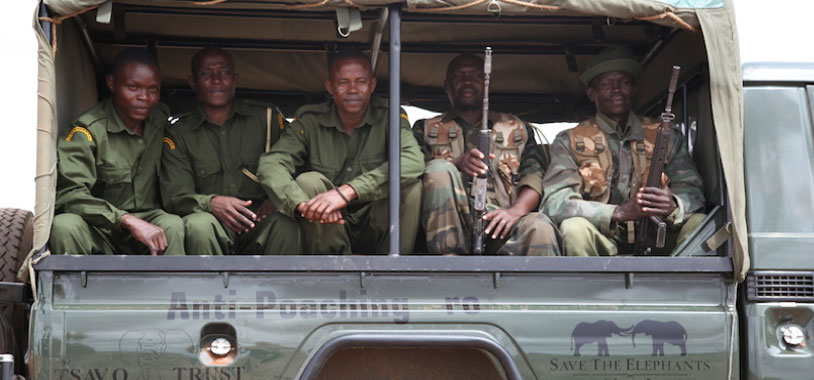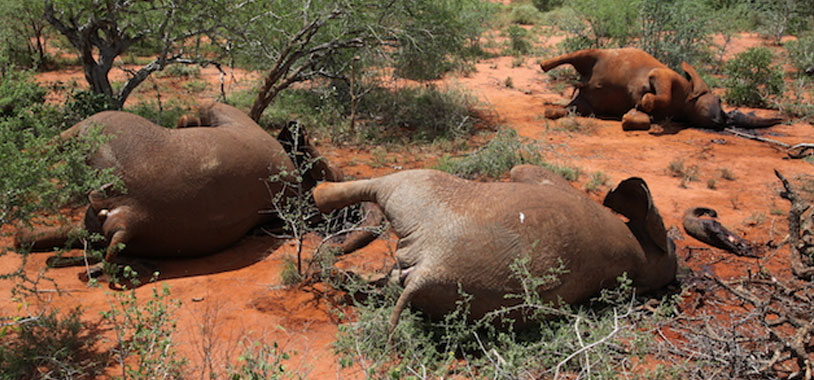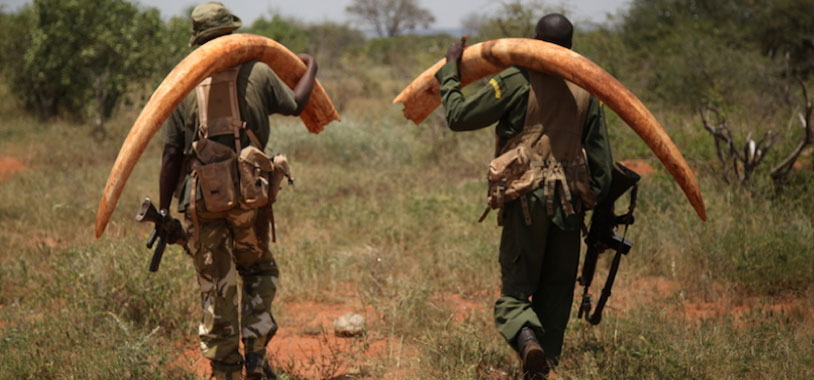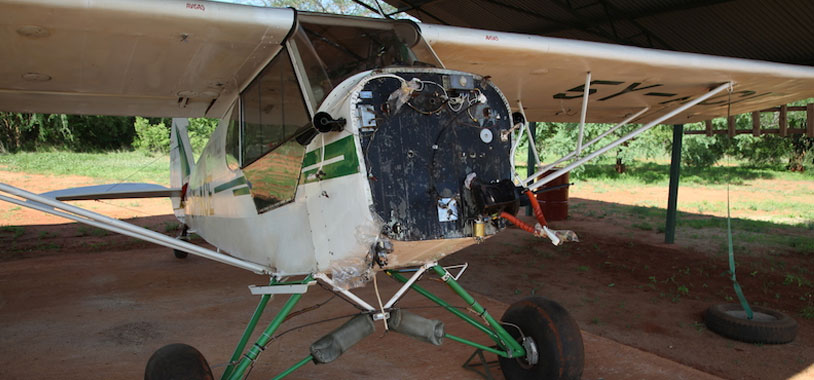Of all the world’s elephants, the few remaining Great Tuskers are those that are most endangered. The price of ivory in China has tripled in the last four years alone, but that’s not all. Ivory is no longer simply a material from which to create carvings. Tusks – the bigger the better – are increasingly seen as a desirable object in their own right, polished up and mounted (see this ECF-sponsored report for more detail).
One of Africa’s last concentrations of Great Tuskers live in the vast expanse of Kenya’s Tsavo National Parks. Defending them against poachers in this wild, largely roadless landscape is a huge challenge. A number of different organisations are working on helping the Kenya Wildlife Service (KWS) in securing the area. The Elephant Crisis Fund has funded the Tsavo Trust to patrol the parks from the air, carrying a KWS ranger on every flight to ensure tight integration with ground forces.
In 2014 the Tsavo Air Wing has been a powerful force for defending the Tuskers. Their super cub – mostly flown by Chief Conservation Officer Richard Moller – has averaged 43 hours in the sky every month, clocking up more than 35,000 miles in the year. In that time they responded to 17 callouts to armed security situations and helped in the arrest of 47 suspected poachers.
120 elephant carcasses were identified along the way, and34 tusks were recovered (from elephants that had been poached or died of other causes), preventing this ivory from reaching the wrong hands.
Twenty-seven “iconic tuskers” — 22 bulls and five cows —were monitored throughout the year from the air, yielding vital information on elephant herd movement and the threats that plague these animals. One tusker – identified as LU1 – was spotted 26 times throughout the year and was observed to routinely cross Mombasa Highway (watch video here).
A low point of the year occurred May 30, when a big tusker called Satao was killed at the edge of the national park by an ivory poacher’s poison arrow. Believed to be at least 45 years old, Satao had been monitored for 18 months by the Tsavo Trust (read the Tsavo Trust’s statement here). Satao’s death rightly caused worldwide mourning, and we must thank the Tsavo Trust and Kenya Wildlife Service that there have not been more such incidents.
Other highlights of 2014 for the Tsavo Air Wing
- Also with support from the Elephant Crisis Fund, a new 4X4 Toyota Land Cruiser vehicle was donated to the KWS to enhance ground response to threats to elephants. This has been deployed in one of the key concentration areas of Great Tuskers.
- A second pilot, experienced bush flyer Peter Lempatu, joined the Tsavo Trust to help expand wildlife- and security-related operations.
- A new ground-monitoring unit has been created to monitor the big tuskers on the ground, as well as other endangered species, such asrhino, hirola antelope, Grevy’s zebra and wild dog.Observers were trained in elephant identification techniques at the Save the Elephants Research HQ in Samburu, northern Kenya.
- The Tsavo Trust participated in the KWS total aerial count of elephants in the 48,000-square-kilometer Tsavo-Mkomazi ecosystem, home to Kenya’s largest single elephant population. Over 11,000 elephants were counted (the results of this census have not yet been officially released), a decline of around 1,500 since the previous count.
“Without the support from the Save the Elephants/Wildlife Conservation Network’s Elephant Crisis Fund in 2014, this Big Tusker Project and aerial reconnaissance could simply not be maintained,” writes Richard Moller in his final report to STE.
The partnership will continue in 2015. Challenges for the year ahead include securing a replacement for the TT’s 52 year-old supercub, 5Y-ACE. Several times the engine has begun spluttering mid-air, and has had to be stripped down twice.
##

Photo taken on 17th July 2014 of the recently donated new Toyota Land Cruiser vehicle to KWS along with joint KWS/TT unit (Tembo 1). This funding came through Save The Elephants/Wildlife Conservation Network/ECF and the Tsavo Trust and clearly shows the excellent level of partnership and working towards a shared goal

Photo above shows 3 very freshly poached elephant on 23rd March 2014. A 5-man gang of Somali poachers poached these elephants in the Taita Ranches outside the Parks. KWS and the Tsavo Trust reacted jointly whereby the Tsavo Trust provided aerial back up to KWS ground follow up. 6 tusks were later recovered following an armed contact between KWS and the poachers. This incident is a good example of the positive joint collaboration between KWS and the Tsavo Trust



